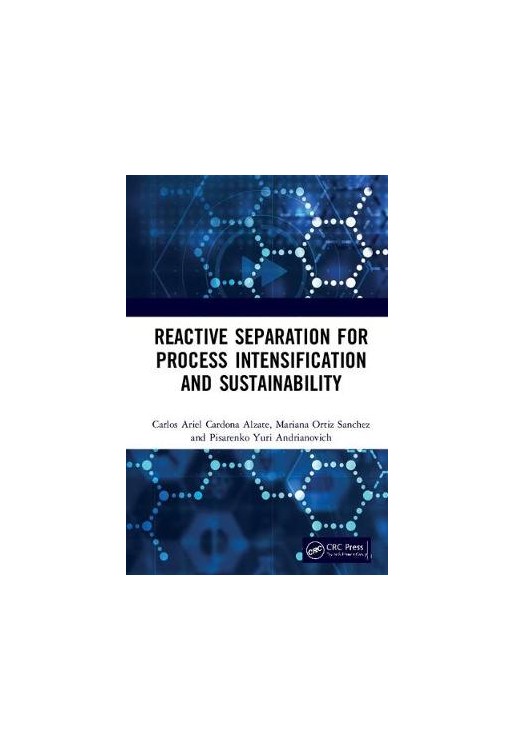This book describes, analyses and discusses the principles, phenomena and design strategies of reactive separation processes with an emphasis on the intensification as a basis of the sustainability. The overall sustainability of reactive separation processes in the industry is also included.
1. Reactive separation processes as a key strategy for sustainable use of natural resources. Definition. Advantages and disadvantages. Phenomenology.
1.1. Reactive separation processes as alternative for improving the processes sustainability
1.2. Reactive separation processes an example of intensification
1.3. Reactive separation processes: Definition
1.4. Phenomelogy
1.5. Advantages and disadvantages
1.6. References
2. Classification of reactive separation processes. Range of applications. Reactive separation processes in the industry. Design methods and strategies. Succeful cases improving process sustainability
2.1. Classification of reactive separation processes
2.2. Range of applications
2.3. Design methods and strategies
2.4. Successful cases improving process sustainability
2.5. References
3. Reactive distillation. Uses and applications. Analysis of the statics. Modeling and simulation. Case study.
3.1. Introduction
3.2. Model
3.3. Strategy and basic concepts of the analysis of the statics
3.4. Trajectory construction
3.5. The basic algorithm of the analysis of the statics
3.6. Case study. Mesityl oxide
3.7. Other approaches to analyze and design reactive distillation processes
3.8. Conclusions
3.9. References
4. Reactive extraction and extractive fermentation. Uses and applications. Conceptual design. Modeling and simulation. Case study.
4.1. Classification of reactive extraction processes by chemical type
4.2. Modeling of a reactor extractor
4.3. Modeling of extractive fermentation
4.4. Case study
4.5. References
5. Reactive absorption. Uses and applications. Conceptual design. Modeling and simulation. Case study.
5.1. Definition
5.2. Classification
5.3. Advantages and disadvantages
5.4. Uses and applications
5.5. Conceptual design
5.6. Modeling and simulation
5.7. Case study
5.8. RAb contributions to process sustainability
5.9. References
6. Reactive adsorption. Uses and applications. Conceptual design. Modeling and simulation. Case study.
6.1. Definition
6.2. Classification
6.3. Advantages and disadvantages
6.4. Uses and applications
6.5. Conceptual design
6.6. Modeling and simulation
6.7. Case study
6.8. RAd contributions to process sustainability
6.9. References
7. Reactive membranes. Uses and applications. Conceptual design. Modeling and simulation. Case study.
7.1. Fermentation and membrane technologies
7.2. Case study
7.3. References
8. Supercritical fluids extraction and reaction. Conceptual design. Modeling and simulation. Case study.
8.1. Supercritical fluid extraction concept
8.2. Modeling and simulation
8.3. Case study
8.4. References
9. Reactive separation processes for biomass conversion and biorefineries
9.1. Biotechnological processes
9.2. Biorefineries
9.3. Raw materials of biorefineries
9.4. Reactive separation processes in biomass conversion
9.5. Application of thermodynamic topological analysis
9.6. Concluding remarks
9.7. References
10. Future and perspectives


